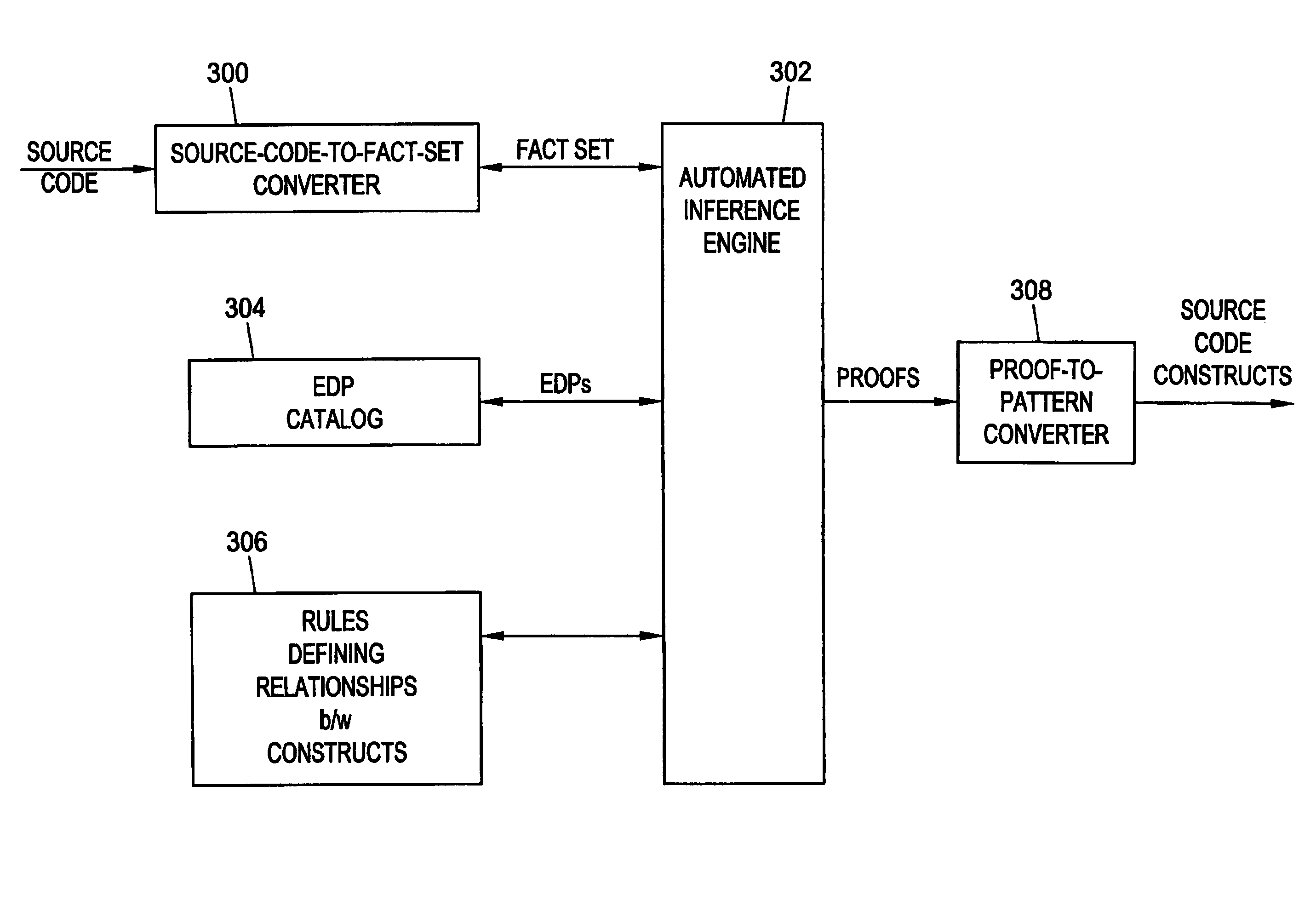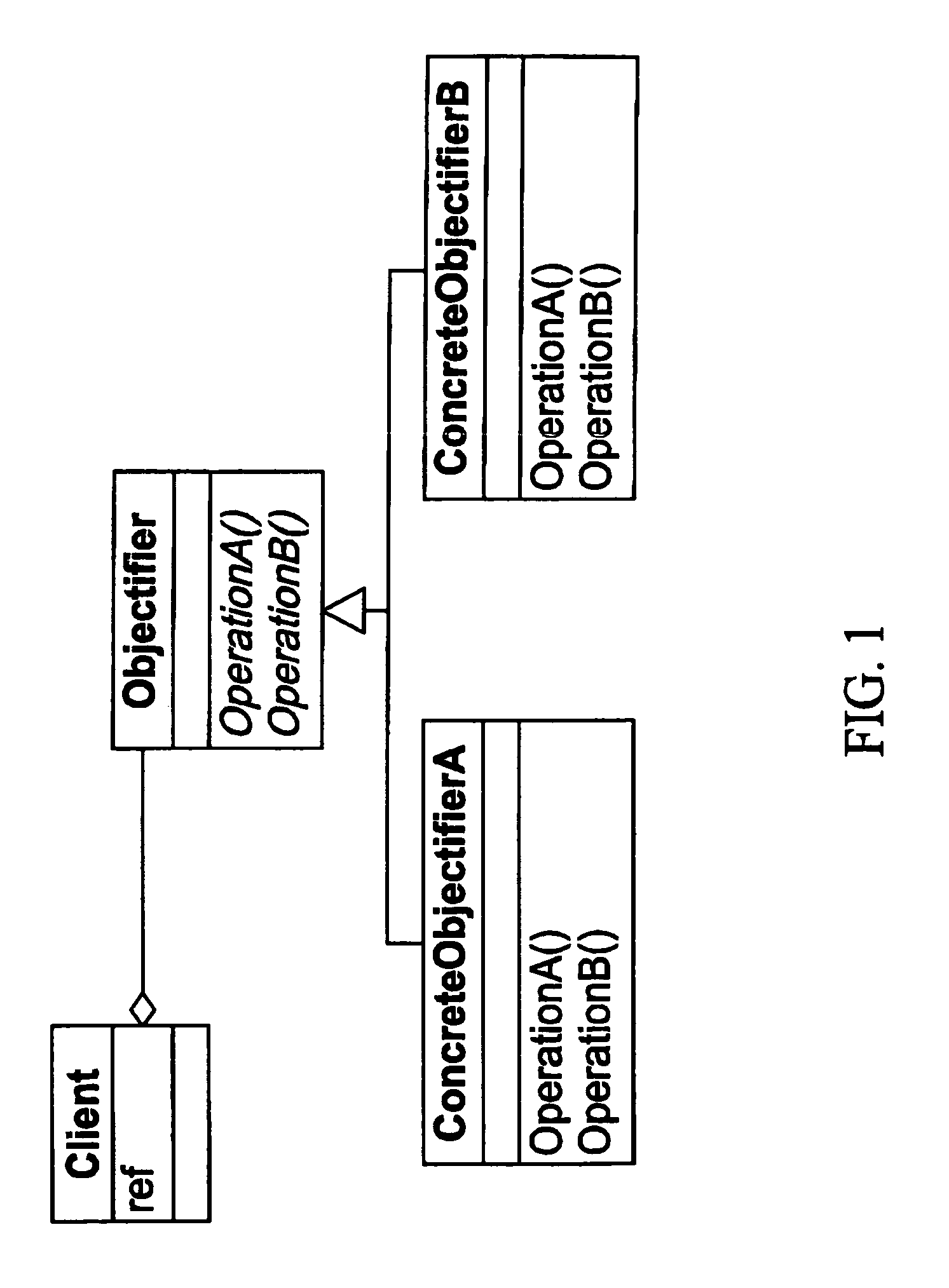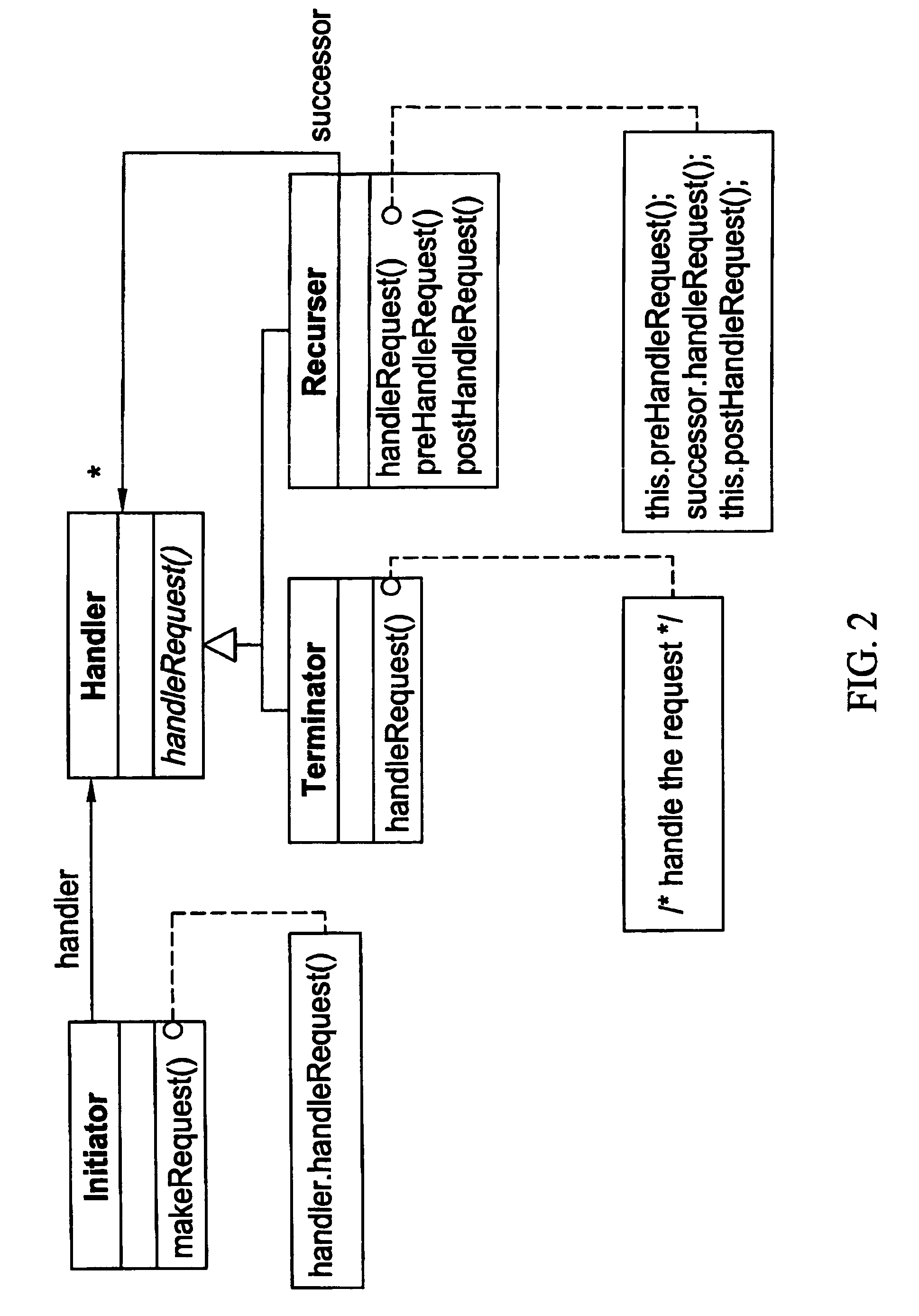Methods, systems, and computer program products for identifying computer program source code constructs
a computer program and source code technology, applied in reverse engineering, instruments, computing, etc., can solve problems such as system limitations, lack of appropriate flexibility of implementation, and inability to identify source code constructs, and limit the usefulness of a unifying system for code analysis
- Summary
- Abstract
- Description
- Claims
- Application Information
AI Technical Summary
Benefits of technology
Problems solved by technology
Method used
Image
Examples
Embodiment Construction
2. EDPs, Isotopes, and Automated Inference
[0062]Elemental Design Patterns and the rho-calculus would be interesting academic exercises only, unless there were good reasons for performing this work. Three applications, including as an education tool, a set of concepts for programming language design, and a formal basis for source code analysis tools will be described in detail below.
2.1. Elemental Design Patterns
[0063]Elemental Design Patterns are design patterns that cannot be decomposed into smaller patterns—they sit one level above the primitives of object-oriented programming, such as objects, fields, and methods. As such, they occupy much of the same space as idioms, but are language independent, relying only on the core concepts of object-oriented theory. They perform the same conceptual task as the more common design patterns however, in that they provide solutions to common programming situations, and do so in orthogonal ways, differing only in scope. EDPs are the foundationa...
PUM
 Login to View More
Login to View More Abstract
Description
Claims
Application Information
 Login to View More
Login to View More - R&D
- Intellectual Property
- Life Sciences
- Materials
- Tech Scout
- Unparalleled Data Quality
- Higher Quality Content
- 60% Fewer Hallucinations
Browse by: Latest US Patents, China's latest patents, Technical Efficacy Thesaurus, Application Domain, Technology Topic, Popular Technical Reports.
© 2025 PatSnap. All rights reserved.Legal|Privacy policy|Modern Slavery Act Transparency Statement|Sitemap|About US| Contact US: help@patsnap.com



